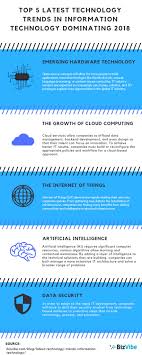The Latest in Internet Technology: Transforming Connectivity
The internet continues to evolve at an unprecedented pace, reshaping how we live, work, and communicate. With each passing year, new technologies emerge that enhance connectivity and redefine our digital experiences. Here is a look at some of the latest advancements in internet technology that are making waves in 2023.
5G Networks
5G technology has been a game-changer in mobile connectivity, offering significantly faster data speeds and lower latency compared to its predecessors. This next-generation network supports a multitude of devices simultaneously, paving the way for innovations such as smart cities, autonomous vehicles, and enhanced virtual reality experiences. As 5G continues to roll out globally, its impact on industries ranging from healthcare to entertainment is expected to be transformative.
Wi-Fi 6 and Wi-Fi 6E
Wi-Fi 6 and its extension, Wi-Fi 6E, are setting new standards for wireless internet performance. These technologies offer improved speed and efficiency by utilising the less congested 6 GHz band (in the case of Wi-Fi 6E), which reduces interference from other devices. This advancement is particularly beneficial in environments with numerous connected devices, such as offices or smart homes.
Internet of Things (IoT)
The Internet of Things continues to expand as more devices become interconnected through the internet. From smart home appliances to industrial sensors, IoT is enhancing efficiency and convenience across various sectors. Recent developments focus on improving security protocols and interoperability among different IoT platforms to ensure seamless integration and protection against cyber threats.
Edge Computing
Edge computing is gaining traction as a solution to reduce latency by processing data closer to its source rather than relying solely on centralised cloud servers. This approach improves response times for applications like real-time analytics and autonomous systems while also alleviating bandwidth demands on networks. As more devices generate vast amounts of data, edge computing plays a crucial role in managing this influx efficiently.
Quantum Internet
Though still largely experimental, quantum internet represents a significant leap forward in secure communication technology. By leveraging quantum mechanics principles like entanglement and superposition, quantum networks promise ultra-secure data transmission that is virtually immune to eavesdropping or hacking attempts.
Conclusion
The latest advancements in internet technology continue to push boundaries and unlock new possibilities for connectivity worldwide. From faster mobile networks with 5G to revolutionary concepts like quantum internet security—these innovations are set not only transform how we connect but also fundamentally alter our digital landscape over time.
Exploring the Latest Internet Technologies: 5G, Wi-Fi 6, IoT, Edge Computing, Quantum Internet, and Cybersecurity
- What is 5G technology and how does it differ from previous generations?
- How is Wi-Fi 6 improving wireless connectivity compared to older Wi-Fi standards?
- What are the potential applications of the Internet of Things (IoT) in various industries?
- What is edge computing and how does it enhance data processing in the era of IoT?
- Can you explain the concept of quantum internet and its implications for secure communication?
- How are advancements in internet technology impacting cybersecurity measures?
What is 5G technology and how does it differ from previous generations?
5G technology represents the fifth generation of mobile network connectivity, offering unprecedented speed, reliability, and capacity compared to its predecessors. Unlike 4G LTE, 5G operates on higher frequency bands, enabling faster data transfer rates and lower latency. This means that users can experience quicker download and upload speeds, smoother streaming, and enhanced connectivity for a wide range of devices simultaneously. Additionally, 5G technology supports a more extensive network of connected devices, paving the way for innovations in areas such as autonomous vehicles, smart cities, and virtual reality applications. The transition to 5G signifies a significant leap forward in mobile communication capabilities and sets the stage for a more interconnected and technologically advanced future.
How is Wi-Fi 6 improving wireless connectivity compared to older Wi-Fi standards?
Wi-Fi 6 is revolutionising wireless connectivity by offering significant improvements over older Wi-Fi standards. With its enhanced speed, capacity, and efficiency, Wi-Fi 6 provides users with faster data transfer rates, reduced latency, and better performance in crowded network environments. By utilising advanced technologies like Orthogonal Frequency Division Multiple Access (OFDMA) and Target Wake Time (TWT), Wi-Fi 6 optimises the use of available bandwidth and allows multiple devices to communicate more effectively. This results in a smoother and more reliable wireless experience, making it ideal for homes, offices, and public spaces where numerous devices are connected simultaneously. Overall, Wi-Fi 6 sets a new benchmark for wireless networking by delivering higher speeds, improved reliability, and increased network capacity compared to its predecessors.
What are the potential applications of the Internet of Things (IoT) in various industries?
The potential applications of the Internet of Things (IoT) in various industries are vast and transformative. In healthcare, IoT devices can monitor patients’ vital signs remotely, streamline medical processes, and enable predictive maintenance for equipment. In manufacturing, IoT sensors enhance efficiency by tracking inventory levels, monitoring machinery performance, and facilitating automated quality control. The retail sector benefits from IoT-enabled smart shelves that automatically restock products based on demand data and personalised shopping experiences through beacon technology. Moreover, in agriculture, IoT solutions optimise crop management with precision farming techniques like soil monitoring and automated irrigation systems. Across all industries, the integration of IoT technology promises increased productivity, cost savings, and enhanced decision-making capabilities.
What is edge computing and how does it enhance data processing in the era of IoT?
Edge computing is a cutting-edge technology that revolutionises data processing in the Internet of Things (IoT) era. By decentralising data processing and moving it closer to the source of data generation, edge computing significantly reduces latency and enhances efficiency in handling vast amounts of real-time data. This approach not only accelerates response times for IoT applications but also minimises the strain on centralised cloud servers and networks. With edge computing, devices can process and analyse data locally, enabling faster decision-making and improved overall performance in the interconnected world of IoT.
Can you explain the concept of quantum internet and its implications for secure communication?
The concept of quantum internet represents a groundbreaking advancement in secure communication technology. Quantum internet harnesses the principles of quantum mechanics, such as entanglement and superposition, to create a network that offers unparalleled security for data transmission. Unlike traditional encryption methods, which can be vulnerable to hacking and eavesdropping, quantum internet ensures that any attempt to intercept or tamper with data would be immediately detectable. This level of security has far-reaching implications for sensitive communications, including government agencies, financial institutions, and healthcare providers, where data privacy and integrity are paramount. As quantum internet technology continues to develop, it holds the promise of revolutionising secure communication practices in ways previously thought impossible.
How are advancements in internet technology impacting cybersecurity measures?
Advancements in internet technology are significantly impacting cybersecurity measures by both presenting new challenges and offering innovative solutions. The increasing interconnectedness of devices through the Internet of Things (IoT) has expanded the attack surface for cyber threats, requiring more robust security protocols to safeguard sensitive data. However, technologies like artificial intelligence (AI) and machine learning are being leveraged to enhance threat detection and response capabilities, enabling proactive defence against evolving cyber risks. As organisations and individuals continue to adopt cutting-edge internet technologies, the need for comprehensive cybersecurity strategies becomes paramount to mitigate vulnerabilities and protect digital assets effectively.




